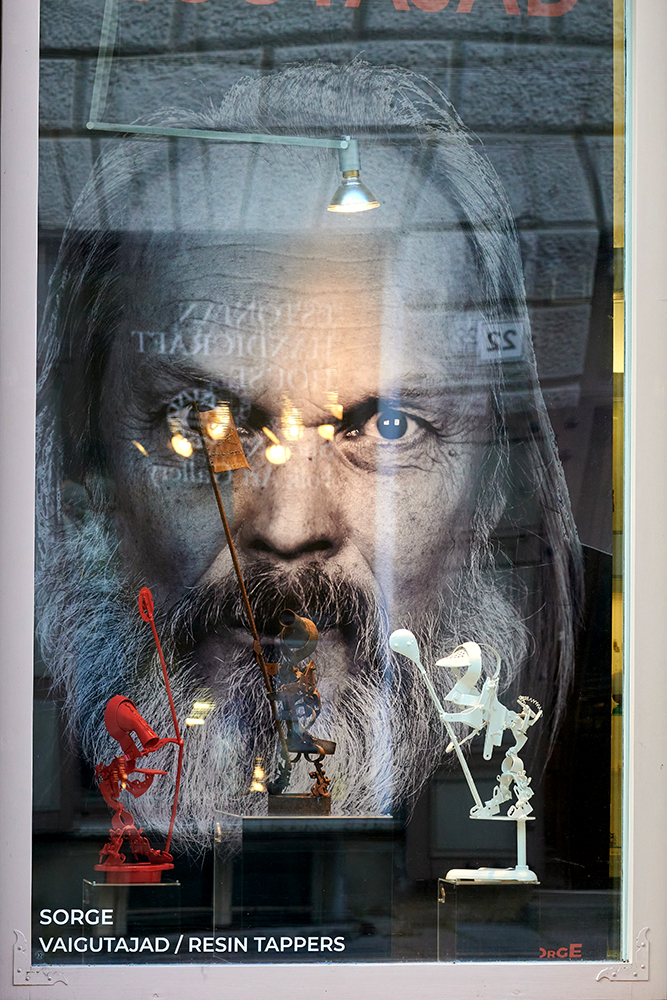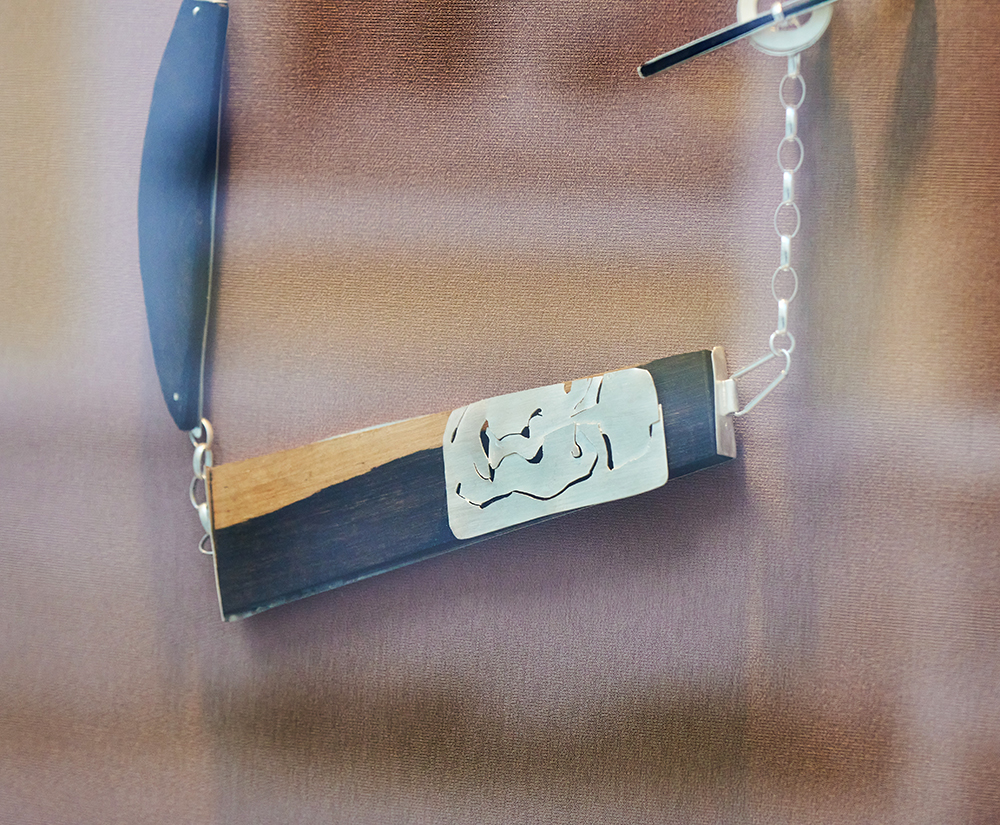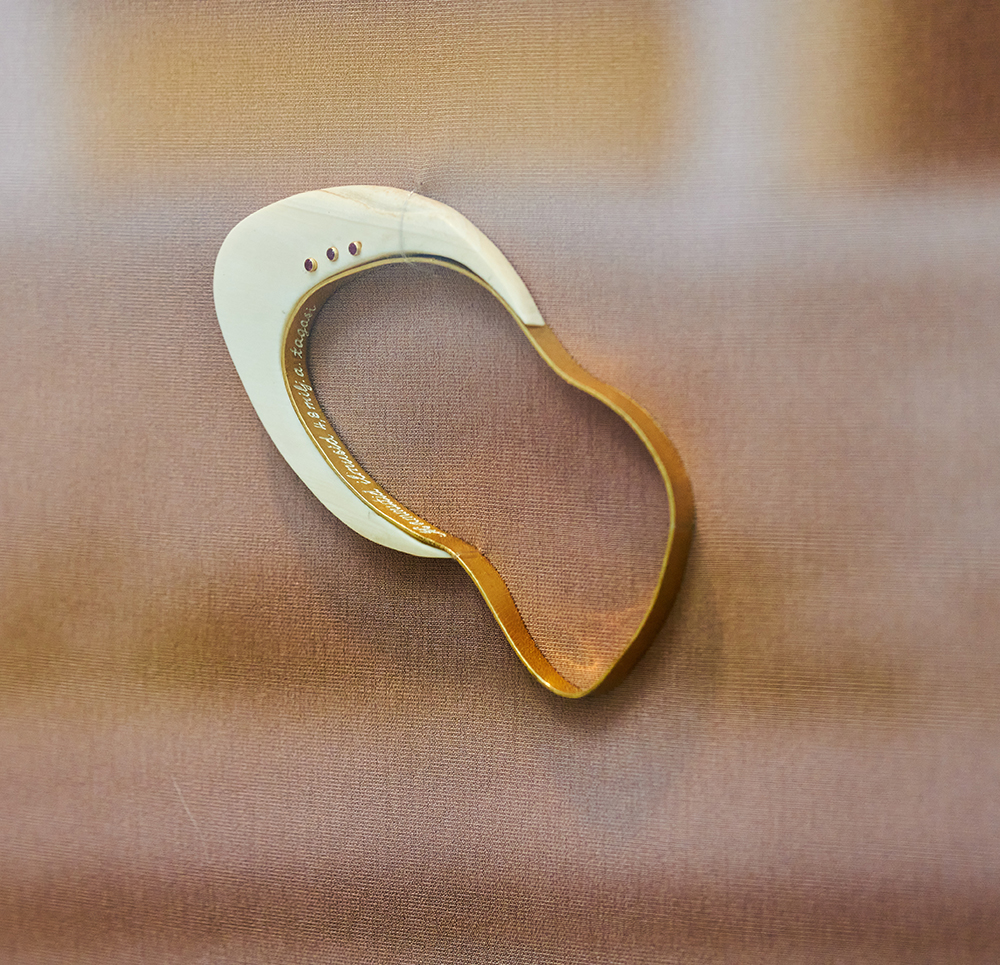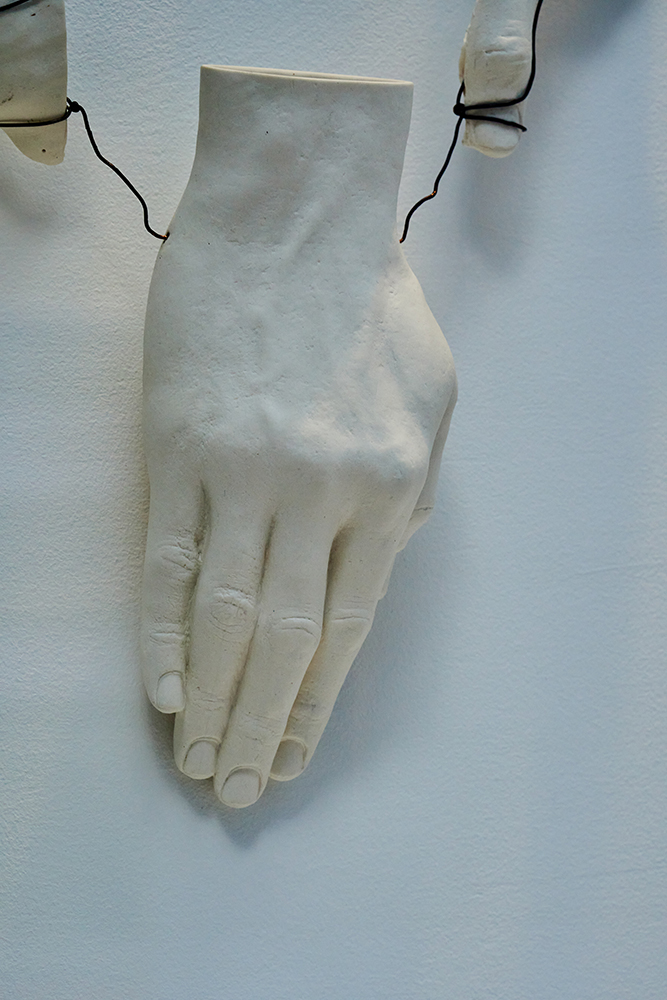

























On October 13, Friday at 18:00, solo-exhibitions of 5 artists will be opened on the WINDOWS of A-Galerii. The exhibitions are brought to you by Olga Tea Krek (EST), Matthias Kühn (DE), Merike Balod (EST), Sorge (EST) and Ritva Kara (FI). It is possible to meet all the artists at the opening.
Olga Tea Krek
J. DOE
Project J. DOE encapsulates the metaphor for temporal and spatial boundaries—like a gem thrown into the heart of existence, it ignites a ripple effect that reshapes the very fabric of reality. The piece exhibited resembles a nesting doll that is covered with layers upon layers of anonymity, but at its core there lies an idea endowed with the potential to transform the world.
Krek’s work is an exploration of human interactions and their influence on one another. She is captivated by the intricate connections that bind people. Furthermore, the world itself, with its ever-present blend of beauty and chaos, serves as a constant source of inspiration for her
Olga Tea Krek is an artist who earned her degree in jewellery and blacksmithing from the Estonian Academy of Arts in 2019. As an exchange student, she extended her studies to Shenkar College of Engineering, Design, and Art in Israel. In addition to her artistry, Krek holds a Bachelor’s degree in Pharmacy.
Matthias Kühn
SHAPE-SERIES
Exhibition SHAPE-SERIES bridges the traditional craft of blacksmithing and contemporary design, urging the viewer to imagine the future of craft.
Kühn searches for answers to urgent ecological problems regarding producing. To create the SHAPE-SERIES, he reclaims scrap steel, transforming industrial waste material through a forging process into high-quality crafted pieces of art. Compared to the traditional use of iron ore and material recycling by melting it, this process is much more energy- and resource-saving. Thus, his work represents a token of transformation towards sustainable craft and art.
In Kühn’s hands, base materials like warped sheets, industrial offcuts, or sections of a construction I-beam eventually revive as sculptures. Initially, he cuts the raw scrap material into smaller regular chunks. The pointy dice of a power hammer drives each piece into a C-, S-, or wedged-shape. The piece’s curved contour could remain planar or arch upward into space. Kühn then connects the pieces of metal with bridges and rivets, linking various shapes to create an organic composition. The name of the series results from this process.
The SHAPE-SERIES is made by avoiding straight lines and right angles. The forging process achieves a triple transformation. Firstly, the triangular or rectangular geometric base forms convert into organically grown “Shapes.” Secondly, the impact of the fire and manual hammering transforms the initial surface treatment and creates a one-off texture and colour. Thirdly, some planar sheets alter into volumetric “Shapes.” The single shapes interlock with each other, creating a flow of various composition lines. The finished piece has an ornament-like structure in which unique shapes can be distinguished from the repetition of classical forms, often found in traditional blacksmithing. Small holes in some of the “Shapes” testify to the previous life of the material.
Matthias Kühn is a metalworking artist and blacksmith. He was born in Osnabrück, Germany, and often moved between the Netherlands and North and South Germany in childhood and youth. Early on, he started to work with metal artistically. After graduating from school, he became an apprentice in the blacksmith workshop of Kunstschmiede Althammer in Leipzig, Germany. Later, he travelled as a journeyman for two years to expand his knowledge, craft skills, and artistic expression. During this time, he worked with blacksmiths in Australia, England, Ireland, Austria, and Germany. He studied Metal Art at HDK-VALAND in Steneby, Sweden.
Merike Balod
EBONY AND IVORY
Ebony and ivory—a classical combination—a chord on piano keys. Black as the earth dug from the ground and white as the wisps of clouds. Together, these materials create a harmony in contrast. By cutting and geometrization of wood and bone pieces, the artist has found a way to modernise these classical materials. “Silver creates a shiny harmony with it, and matte is like different tones in music…” says the artist.
Merike Balod graduated from the former Estonian State Art Institute (now known as the Estonian Academy of Arts) with a degree in metalwork in 1988. Since that year, she has participated in exhibitions. She creates jewellery in the “10 kunstniku ateljee” (10 Artists’ Studio) on Hobusepea street.
Sorge
RESIN TAPPERS
The exhibition continues Sorge’s series “Resin Tappers.” Resin tapping is a way in the forestry industry to collect resin from living trees by cutting a peculiar feather-like pattern into the tree trunk. The artist creates welded sculptures of different characters from old resin tapping tools. These characters afterwards are painted according to their personalities.
Sorge says: “Most of the work is welded from old resin tapping tools, with the addition of some random details. The raw materials came to me entirely by chance. While walking on the former forest combine territory, I noticed pieces of metal sticking out from under an old panel. I picked up some of them, and as if by itself, the first resin tapper design was ready. It seemed successful, and then the rest of the characters followed. Enjoy the exhibition!”
Sorge, alias for Margus Tiitsmaa (1963), is an Estonian artist born in Rakvere and grew up in Roela. In 2008, he completed his master’s degree in interdisciplinary arts at the Estonian Academy of Arts, and prior to that, he studied drawing and art education at Tallinn Pedagogical Institute. Sorge has been involved in painting, graphics, sculpture, installations, and performance art. Throughout his life dedicated to art, the artist has performed in over 200 performances and participated in nearly 100 exhibitions in Estonia and abroad.
Ritva Kara
FROM THE TREE
The FROM THE TREE exhibition features colourful brooches carved from wood, pendants made of silver and amber, as well as jewellery crafted from dried bananas and branches. The “KaranBa Banana” jewellery collection upcycles otherwise spoiled bananas, enhancing their value by adding gold and silver leaf to their surfaces. This jewellery collection represents an ecological, ethical, and aesthetic statement. Each piece on display is unique, bold, and innovative in terms of shape and materials.
Kara states: “I feel that unique jewellery is part of personality, experienced life and important memories. I confess that I am a crazy collector and maker, for whom creative play, experimentation and research, as well as developing and applying new art methods, move processes forward.”
Ritva Kara is a Finnish jewellery artist and teacher who has studied at various universities and schools specialising in crafts and design. In 1997, Kara earned a master’s degree from Helsinki University. Her jewellery has been exhibited since the 1980s, both in Finland and internationally. While she primarily created enamel jewellery earlier in her career, in recent years, she has drawn inspiration from natural materials such as branches affected by caterpillars, dried bananas, apples, and amber.